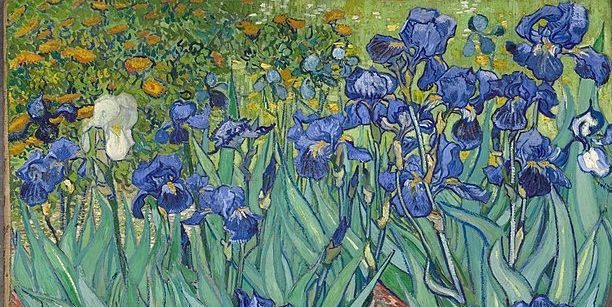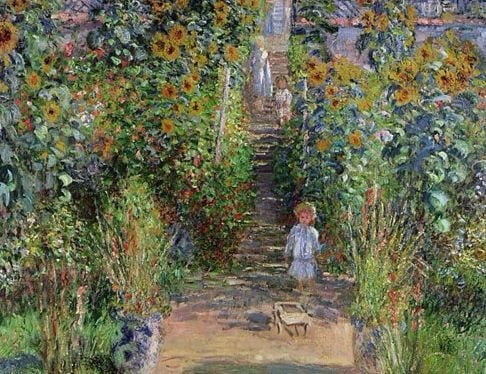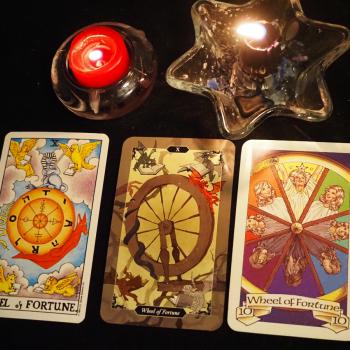Sorting the springtide can be difficult. Trying to balance Valentine’s day with Imbolc, Secular Easter with Ostara (My kids just don’t need all that candy twice!) and Beltane which actually, finally (Finally!) acts like spring. For those of us with a northern climate here are some ideas for fun and useful ways to integrate your spirituality into your daily life as spring slowly emerges from her snow covered sleep.
Polytheist Paganisms are often materialist religions, which means that we revere the sacred in the physical. Unlike religions that house the sacred up in a distant heaven, we often believe (And I absolutely believe) that the sacred is inherent within all living things. This means that taking care of the stuff we accumulate and the land we live on is taking care of the sacred and is a magical act.
One: Spring Cleaning is a Real Thing. Who knew?
When I was younger I thought spring cleaning was some weird thing that Victorian people did by airing mattresses and beating rugs. I may have read more Jane Austen novels than is mentally healthy. Turns out that throwing open the windows for some fresh air after being cooped up all winter feels great. Combining that with vacuuming under all the furniture is good for the house and good for the soul. It’s also good for my daughters LEGO sets when I find the missing leg to her ice dragon. There are a number of goddesses and spirits you can dedicate this kind of work to. It’s like getting double credit. Not only do you get a clean house, you also get to give a gift to the spirit of your choice!
Hulda, Brighid, Frigg,the Norns, Laima, or any of the matronly deities like cleaning as an offering. House spirits themselves like the cleaning too so light a candle beforehand and dedicate the cleaning to them. Make sure to throw in a little purification and cleansing afterward. I like to clean windows and mirrors with lemon juice and vinegar in water, which does both at the same time.
Altar cleaning is another obvious choice for spiritual spring tidying. Dust everything. Throw out or set aside little bits of paper, spell components or prayers to burn, and wash your statues. I like to put them in the sink, douse them with ashes or salt, and say a prayer to the deity, then rinse them with water and let them dry before I put them back on the altar. Give the sink a scrub beforehand. Not only is it respectful to your deity images, it gets the sink cleaned for once.
There are many religious traditions where the deity image is the Deity in a very real way. By taking the time to wash your statues clean or wiping the glass in your picture frames you are washing the gods themselves. This can be seen in the Greek tradition of weaving the statue of Athena a new gown every year, in Hindu traditions of washing statues, and even in the Anglo-Saxon priest name Weofodthegn, which translates as the servant of the altar.
Two: Seed Starting and Growing Plants
This is an obvious one, but because I have some training in horticulture I thought I’d bring it up anyway. I always encourage people to grow some of their own food. I also alway remind them that growing food is a skill, not an instinct, and there is a learning curve. I encourage people to slowly learn those skills rather than dive in and bite off more weeding and watering than they can chew. Start with container gardens or a small herb garden. Herbs are very tough plants and easy to grow. They’re fairly expensive and a little goes a long way. Lettuces, spinach, and patio tomatoes are also good plants for busy people. There are lots of books on the topic here’s my list of favorites. I will suggest that growing seedlings in eggshells is cute, but because there’s no drainage the roots can get waterlogged. This can cause the plants to die, it’s better to get some peat pots or pellets. Some things like lettuce, spinach, radishes, and peas can be planted directly into the soil when it’s cold. This is true even when there is still frost and the occasional snow on the ground as is common here in the Northern Hinterlands.

When you plant seeds invoke one of many fertility gods and goddesses. Call on Zemenya, Gaia, Nerthus or Demeter. Say a little prayer to Ing Frey or his wife, the Goddess of the Walled Garden: Gerda. Personally I like to sing The Garden Song, made famous by John Denver. (I heard the John Denver version first, feel free to argue with me about who made it famous in the comments below.) Singing to your plants is a wonderful way to share caring and give offering and they never complain if you’re off key.
“Inch by inch, row by row, gonna make this garden grow….”
Three: Ancestor Plants
This is less of my own idea than something that just sort of happened to me. I kept getting given the plants of the dead. What I mean is when a friend’s beloved grandparent or relative passed I ended up being given houseplants they had grown because I could keep them alive. The friend was afraid their black thumb would send the plant to the grave right along with grandma. I’ve also gotten plants that were gifted at funerals instead of cut flowers.
This is the time of year when I start new houseplants from cuttings and roots. Right now I have three little baby african violets started from my grandfather’s african violet. I am rooting vines from a funeral arrangement from my husband’s grandmother’s funeral. I often share these starts at Beltane and have received plants as well, including an ancient two foot jade tree. Sharing plant starts is a great way to get new plants, but I especially love the stories that I collect when I know I’m tending a plant that was tended by an ancestor.
I encourage people to start a tradition of sharing plants at Beltane as a modern way of connecting with the resurgence of fertility at this time of year. There’s a Beltane folk custom of going from door to door handing bouquets of spring flowers to your neighbors, which is a delight if you happen to have an abundance of spring flowers. If you have houseplants, you always have something to share.

Four: Discovering Nature Shrines
There are many ancient traditions passed down about interacting with sacred sites. There’s the big fancy ones like Stonehenge, and Mt. Olympus but I’m more interested in clootie trees in Ireland, the sacred stones of Lithuania the small intimate interactions between a person and the local land. As a modern Euro-Tradition Pagan I struggle with how to interact with the land in a respectful way. I want to interact with the spirits, but I also don’t want to appropriate. Here’s a method I’ve been using:
Go to a park or nature preserve that you often go to, someplace you’re going to visit again and again. Bring some sort of card based divination and offerings of various sorts. I bring ash, cream of tartar, ground eggshell, herbs, and a few other things. Make sure your offerings are biodegradable and non-damaging to the environment. No plastic, no tying fabric on trees and strangling branches, no glitter or paper. Once you’re at the park or preserve, look around and think where you might want to make a shrine. Maybe at the base of a tree or on a riverbank where the water has eroded the bank and the stones and roots are exposed. You can tell what looks sacred to you.
Don’t just set up that shrine wherever you please. You ask first.
That’s what the card based divination is for. First thing, you have to make sure it’s properly shuffled. You want there to be a fairly even distribution of right side up cards and upside down cards. In this divination having the possibility of reversals is key. Flip up three cards at the spot where you’d like to place a shrine. If all three cards are upright it’s a yes. If even one card is down, it’s a no. That means statistically you’re going to be getting a lot of no answers. That is a good thing and the way it’s meant to be. We need to practice hearing no as a culture. We need to practice patience and respect.
I am a polytheistic pantheist. I can practice consent culture with the spirits, and so can you. After you do your divination you give an offering based on the cards drawn. For instance, If I was using tarot and I pulled two Wands and the Chariot, with two reversed, the answer would be no, and I would leave an offering of ash as aligned with the element of fire that rules the Wands suit.
This is just the basic idea and I’m working on expanding the practice to include sacred pilgrimage in local space, bargaining with the local spirits, and building a deep well of magical and spiritual value and energy that I can use in my own life. I encourage you to develop such practices in your own life and try out asking the spirits if they would like a shrine this Beltane.
Thank you to everyone who has signed up to support my work. It really means the world to me. I’ve felt the physical difference in having that money to buy supplies, pay for fees and for gas to get places to teach. One day at a time I am working on finding ways to support the folk and be supported in turn. If you’ve been thinking about it, even a dollar a month really helps.
















